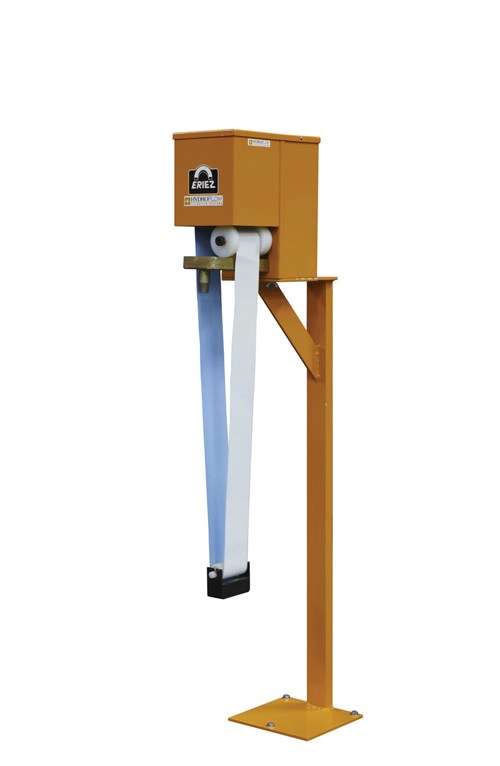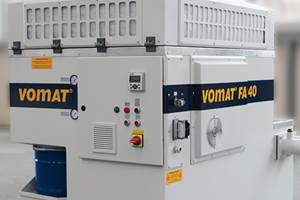Maximize Coolant Life with Efficient Tramp Oil Removal
Increased demands for high surface finish and close part tolerance create a greater need for manufacturers to purify coolants that are constantly being cycled through precision machinery.
How critical is fluid filtration in any metalworking or metal forming process? Increased demands for high surface finish and close part tolerance create a greater need for manufacturers to purify coolants that are constantly being cycled through precision machinery.
Maintaining coolants free of any contaminant should be standard operating procedure at any shop, whether it produces relatively simple items or more complex objects such as medical devices or engine parts for aerospace applications. All machining processes generate a tremendous amount of heat. Properly maintained coolants give the cutting tool or grinding wheel a long life and help to prevent burning and smoking while providing a better finish.
Fluid filtration technology achieves extended tool life, improves component quality and reduces maintenance and spare parts costs. High productivity and low environmental impact are other reasons to monitor fluid cleanliness.
A Critical Process
Fluid purification, in particular, means the timely removal of tramp oil that leaks into the coolant. This residue can include way lube, hydraulic oil, spindle oil and gearbox oils. Older machines leak oil naturally while newer CNC machines purposely leak at least a quarter of way lubes a day and often much more.
Tramp oil is probably one of the most common contaminants in metalworking fluids. The term is a catch-all for sources of non-soluble contaminants (usually oil-based) that can come in contact with the metalworking fluid as a function of the process or the equipment.
Removing tramp oil from the manufacturing process is critical for improving fluid performance and longevity, air quality, bacterial resistance, corrosion resistance and tool life.
Tramp oils are categorized in two main ways. Free tramp oils will float to the surface of the fluid. Emulsified tramp oils become chemically emulsified to the coolant or cleaner and do not float to the surface.
Each type of coolant reacts with tramp oils differently. Synthetic coolants typically reject the tramp oils, causing them to float out of solution to the surface. Semi-synthetic coolants reject some of the oils, but over time will chemically emulsify the oils. Soluble oil coolants will chemically emulsify the tramp oils sooner or later.
Whatever the source, tramp oil is a foreign contaminant that can create a number of problems, including corrosion and staining issues, dermatitis or skin irritation from fines and metallic debris trapped in the oil.
Choosing a Filtration Device
A number of conventional methods are available for tramp oil removal. The most common methods are skimmers, centrifuges and coalescers. Eriez Hydroflow offers a line of products in various sizes to help reduce the adverse effects of tramp oil.
Portable Tramp Oil Separator: This mobile centrifuge provides small metalworking plants with true, high-speed centrifugation. The tramp oil separator recycles fluids at the sump by placing both the suction and return hoses directly into the machine sump, removing free and emulsified tramp oils from water miscible coolants and aqueous cleaners. This process enables uninterrupted machine tool operation.
Self-Cleaning Centrifuges: Typically, self-cleaning centrifuges are designed for central fluid systems. They pull the fluid, remove tramp oils and small fines, and return cleaned fluid to the central system. This type of centrifuge package can be designed to handle any combination of central systems and individual machine tool recycling.
The high-speed disc bowl centrifuges are available with a manual clean, solid wall bowl or an automatic self-desludging two-part bowl design. The automatic version is preferred in high solids applications and on central system equipment.
Portable Coalescer: This unit is designed for metalworking operations needing a simple, effective, low-cost tramp oil separator that can be moved from machine to machine. The portable coalescer uses an oleophilic (oil attracting) coalescing plate pack media to remove oils effortlessly and efficiently.
The unit is equipped with a standard electric submersible pump, but can be upgraded with an operational air pump or a heavy-duty electric pump for deeper sumps. The portable coalescer is also effective with high temperature fluids such as cleaners.
Tank Side Coalescer: With a flow rate of 1.5 gpm, this small and inexpensive sump-side coalescing unit allows oils to rise naturally by providing a quiescent area not available in a turbulent sump. The tank side coalescer comes standard with a submersible pump or with an optional air pump.
Surface Oil Skimmers: A deluxe model surface tramp oil belt skimmer has an oleophilic belt and a unique method of stripping the separated oil from both sides of the belt without contacting a stationary scraper. This design provides a nice combination of performance and long belt life.
A standard model surface tramp oil belt skimmer uses a similar “oil-loving” belt, but uses a more compact scraper blade to strip the separated oil from the belt. This low maintenance item can be equipped with a timer so the unit runs only when the machine is idle and the tramp oils have risen to the surface.
Understanding Tramp Oil
By using the right tramp oil purification process and equipment, metalworking operations can see a 40 to 80 percent reduction in coolant purchases and a corresponding decrease in disposal costs. Most industries, particularly metalworking and metal forming, have become responsible leaders in protecting our environment. Today, more emphasis is placed on recycling and metal recovery. Where fluid recovery is required, choosing the right filtration equipment to eliminate tramp oil contamination is critical to long-term savings and operation efficiency.
Related Content
Heavy-Duty Synthetic Coolant for Machining, Grinding
PMTS 2023: Fortech’s TechKool FT4000 synthetic coolant is formulated to reject tramp oil that can cause smoking or misting and premature spoilage of coolant.
Read MoreVomat Coolant Filters Provide Precise Temperature Control
The company’s filters ensure a continuous supply of clean oil for microtool grinding applications.
Read MoreThe Case for Higher-Performing Metalworking Fluids
Machine shops have the opportunity to enhance their profitability by choosing the proper metalworking fluids for each machining application.
Read MoreBio-Air Tool Lubricants Eliminate Reportable Incidents, Cleanup Costs
These air tool oils provide excellent lubrication for both rotary and reciprocating types of air tools, such as chipping hammers, impact wrenches, air motors, grinders, reamers, drills and more.
Read MoreRead Next
Portable Sump Cleaner Brings Savings
For efficient operations and a positive, healthy work environment, companies need to keep in mind the overall cleanliness of the facility as well as important details such as the machine tools themselves and the cutting fluids being used.
Read MoreDo You Have Single Points of Failure?
Plans need to be in place before a catastrophic event occurs.
Read MoreA Tooling Workshop Worth a Visit
Marubeni Citizen-Cincom’s tooling and accessory workshop offers a chance to learn more about ancillary devices that can boost machining efficiency and capability.
Read More








.jpg;maxWidth=300;quality=90)













